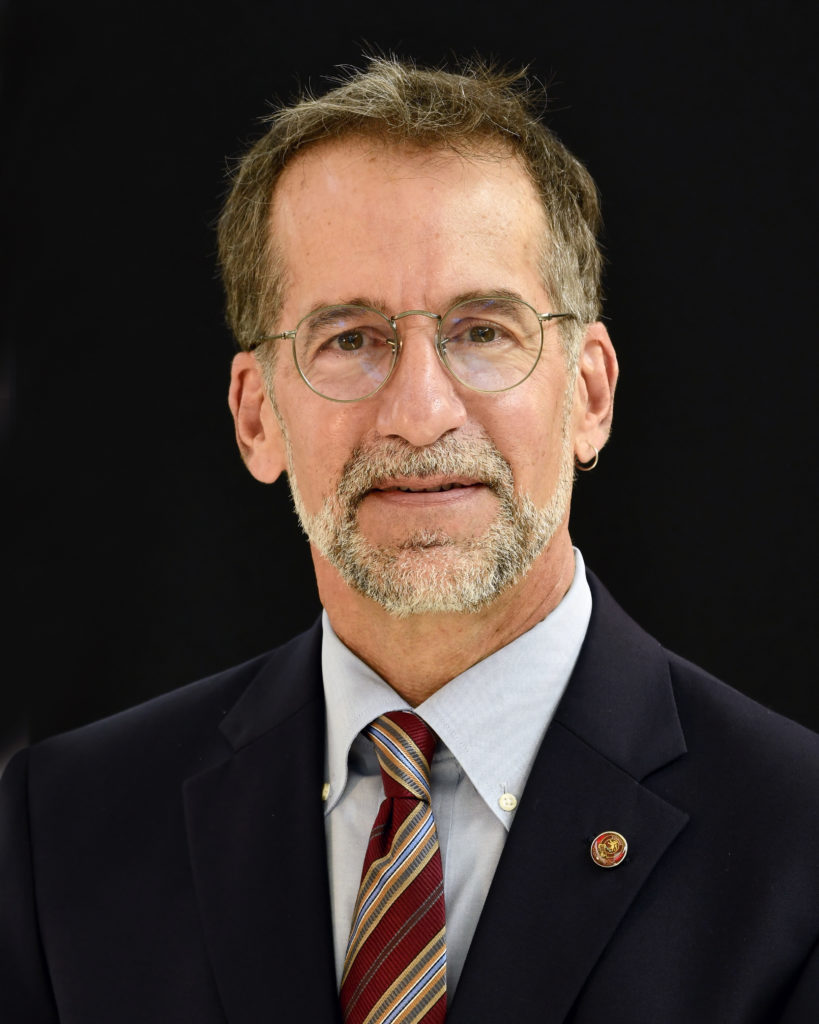
The University of Maryland Eastern Shore’s Department of Natural Sciences has been awarded a nearly $5 million grant for a pilot project integrating chicken litter into switchgrass production as a source of sustainable biomass feedstock to support anaerobic digestion and the production of biogas at local facilities.
The five-year project looks to boost biogas production, mitigate climate change factors, and create new farm revenue streams for farmers. The grant is funded through the USDA-NRCS Partnerships for Climate Smart Commodities program. Aimed at building markets and investing in America’s climate-smart farmers, ranchers and forest owners, the program is designed to strengthen U.S. rural and agricultural communities by identifying new practices and pathways that valorize new commodities while substantially reducing environmental externalities of production and mitigating climate change. The project targets the production and processing of chicken litter as a soil amendment while utilizing standard cover crops as well as switchgrass, a low-input perennial grass, as new feedstock commodities for biogas production.
The Delmarva Peninsula chicken industry generates about 850,000 short tons of poultry litter annually. The litter is a concern because it is frequently applied to fields as a fertilizer, although the high amounts of nitrogen and phosphorus in the litter can leach into the Chesapeake Bay watershed, leading to eutrophication that damages the bay’s fisheries and shellfisheries.
The project, led by Dr. Jonathan Cumming, at left, Department of Natural Sciences chair and professor, partners with researchers at the University of Maryland College Park and Planet Found Energy Development LLC in Pocomoke City, a subsidiary of Chesapeake Energy Corp., to use anaerobic digestion of chicken litter to generate biogas (a mixture of carbon dioxide and methane) and a carbon- and nutrient-rich by-product, the digestate.
“The digestion process utilizes much of the chicken litter to produce methane that can be used to power local farm operations. It also captures nutrients and creates digestate, the leftovers from the digestion process that contains carbon and stable forms of nitrogen and phosphorus that are not easily leached,” said Cumming, continuing that these help improve carbon pools and prevent nutrient leaching to the bay. “We get great soil at the end of the day.”
The team will evaluate the potential to expand farming practices from the use of standard cover crops solely as a soil conservation practice to their use as a feedstock commodity for the expanding bioenergy sector. Jason Lambertson of Millennium Farm will facilitate the project’s farm-scale AD trials of cover crop and poultry litter feedstocks. Additional farmers will be added during the course of the project, specifically targeting small farms in disadvantaged communities.
“One challenge to the anaerobic digestion process with chicken litter is the high nutrient levels,” Cumming explained. To optimize digestion, more carbon needs to be added. “That’s where the cover crops and switchgrass come in.”
Plant residues are high in carbon and represent a natural option to boost digestion efficiency. Current practice has winter cover crops being ‘burned down’ (killed by herbicides) prior to planting crop seed in the spring. Harvesting the winter cover and paying farmers for it provides a source of carbon for the AD process and a new revenue stream to farmers. However, with only the spring harvest, the feedstock is only available for one season. Switchgrass, a perennial, can be harvested several times in the growing season, spacing out the availability of the AD additive.
“Farmers also gain advantages with switchgrass because it is a perennial, and we can identify cultivars that can be grown on marginal soils, including those affected by saltwater intrusion,” Cumming added, bringing more land into production and boosting farm income.
Switchgrass also plays a critical role in mitigating climate change. As a perennial, it captures atmospheric carbon dioxide and transfers this carbon to the soil because it has extensive root systems, much more extensive than regular cover crops.
“This carbon transferred to soils by switchgrass enters the soil ecosystem and is stabilized and stored for the long-term,” Cumming added, “which gets it out of the atmosphere where it contributes to the greenhouse effect.”
Ultimately, this and other climate-smart practices will mitigate climate change and help reduce the impacts of climate change on temperatures and extreme weather events.
Focus groups and surveys will specifically address technical assistance gaps and barriers to adoption of the climate-smart commodity systems, and the project at UMES will evaluate the potential economic as well as ecological impacts with underserved farmers.
“The study will see if switchgrass can become as valuable as corn as a new commodity, and we will weigh a farmer’s time commitment, fertilizer and seed costs, and market demand with the environmental benefits of committing to cover crop or switchgrass production,” Cumming said. “The ecological benefits of switchgrass are very large and, if these can be valorized through the anaerobic digestion and carbon markets, small farmers and the world as a whole have a lot to gain.”
Laura Sileo, director, Agricultural Communications, University of Maryland Eastern Shore, School of Agricultural and Natural Sciences, lcsileo@umes.edu, 410-651-6084.
Photo by Todd Dudek, Ag Communications, UMES, tdudek@umes.edu

